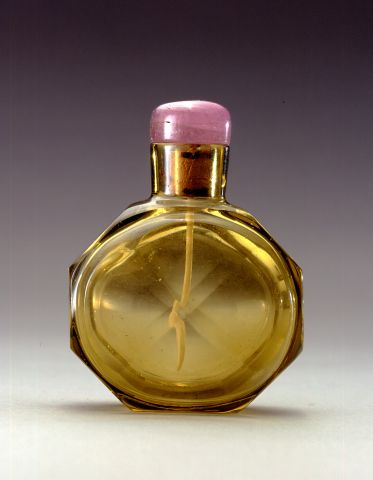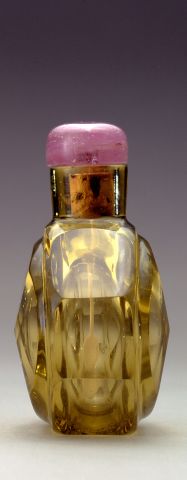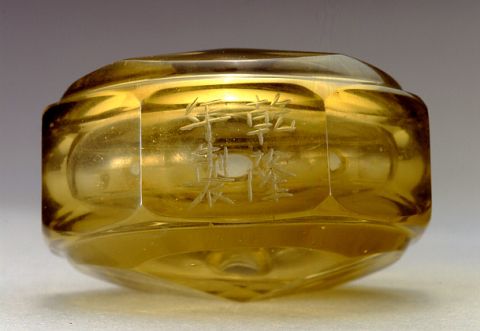


Bottle ID: 00498
GREEN OLIVE, OCTAGONAL FACETED W/RAISED PANELS
Date: 1736-1795
Height: 53 mm
Glass, of octagonal faceted form, with raised panels on the front and reverse, blown and carved as diagonally segmented quatrefoils, the straight neck ending in a wide mouth, of vivid olive-green tone, the base with a four character wheel-cut Qianlong nianzhi mark and of the period.
Imperial, attributed to the Palace Workshops, Beijing.
Similar Examples:
Crane Collection no. 296
Crane Collection no. 274
Christie's, New York, March 21, 2000, lot 118, from the Collection of Rachelle R. Holden.
Hall, Robert. Chinese Snuff Bottles IV, p. 97, no. 96.
Spink & Son, London, Chinese Jewellery and Glass, December 20, 1989, pp. 86-87, no. 143, faceted green glass vase.
Provenance:
Asian Art Studio
Sotheby's, New York, March 23, 2004, lot 1
Robert and Molly Hsieh
Robert Kleiner Ltd.
Geoffrey Willis
Sotheby's, New York, December 2, 1985, lot 159
Paula Hallett
Hugh Moss Ltd.
Exhibited:
Annual Convention ICSBS Toronto, October 2007
Published:
JICSBS, Winter 1985, p. 30, fig. 4
Bottles of this octagonal faceted form were a favorite at the Court in the eighteenth century in materials such as jade, agate and most popularly glass. The earliest faceted bottles were small in size and generally with raised quatrefoil panels on the two main fascias, although rounded panels are also seen. Examples were made in translucent milk-white glass to be sent to the enamel workshop for decoration of the highest quality. Faceted glass bottles increased in size as the eighteenth century wore on, and became more upright in form in the early nineteenth century, with the Daoguang marked examples being among the largest. The colors used, as the form developed, reflect the tones that were available in the Imperial workshops with more colors becoming available by the late Qianlong period. Such was a liking for this form that faceted glass objects, such as vases and scholars' objects, were made in a whole range of colors. The Crane example is of a classic 'West Lake Green' color reflecting the famous color of the lake in the Qianlong period. With its four character wheel-cut mark, it is an excellent example of this group.
< Back to full list
 English
English 中文
中文